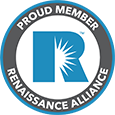Return to Work – Health and Happiness
Return to Work programs help you get injured employees back to their normal or  modified job duties as quickly and safely as possible.
modified job duties as quickly and safely as possible.
Instead of paying for workers’ compensation costs and lost work days, you’ll save money by paying your employees their normal wages for doing light-duty work that the company needs done anyway. You’ll also be able to keep them on their regular work schedules, which is proven to increase their likelihood of returning to regular working duties sooner.
Benefits for Your Company
Return to work programs reduce employees’ days away from work, allow employees to recover more quickly and foster a more positive work environment.
Implementing a return to work program can benefit your company financially by:
- Anticipating and controlling hidden costs
- Reducing the financial impact of workplace injuries
- Providing a proactive approach to cost containment
- Improving your ability to manage an injury claim and any restrictions
- Getting your experienced employees back to work, resulting in less time and money spent on recruiting and hiring
- Helping you keep regular contact with injured employees
Your company can benefit from a return to work program in other ways, including:
- Boosting morale
- Keeping injured employees productive
- Discouraging abuse
- Demonstrating a consistent procedure
- Establishing solid communication and organization
- Enhancing injured employees’ self-worth
Benefits for Your Employees
Return to work programs don’t just benefit your company—they benefit your employees, too. Implementing a return to work program for injured employees communicates care and concern, and shows your employees that you value their well-being and want them back on the job as soon as possible.
Your employees also benefit from a return to work program in the following ways:
-
-
-
-
- Retaining full earning capacity
- Maintaining a productive mindset
- Staying on their regular work schedule
- Avoiding dependence on a disability system
- Having a sense of security and stability
- Seeing management’s commitment to employees’ well-being reinforced
-
-
-
Get Your Program Going
Many companies fail to implement return to work programs because they don’t have the resources or expertise to get started. Return to work programs must be organized and implemented efficiently, and Anastasi Insurance Agency, Inc. can help you do just that by providing you with the resources you need to make your program a success, including educational articles, forms and policies.
Our staff of loss control professionals can conduct a thorough evaluation of your company’s return to work program needs and determine the best plan for your organization.
| Anastasi Insurance Agency, Inc.
4 Brookfield Road Charlton, MA 01507 P | 508-248-1440 |


